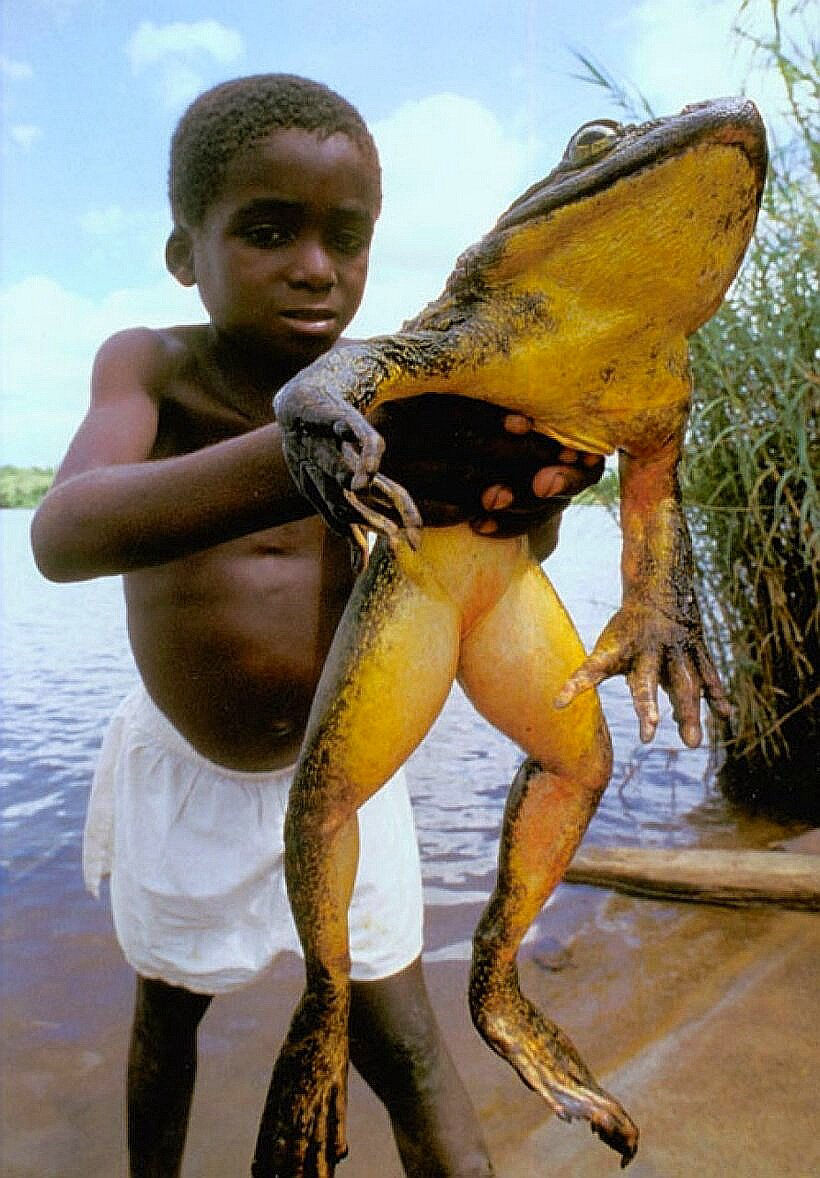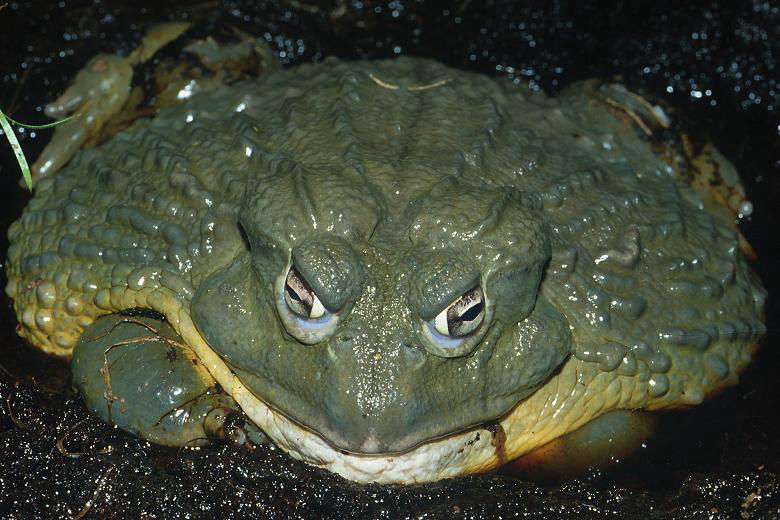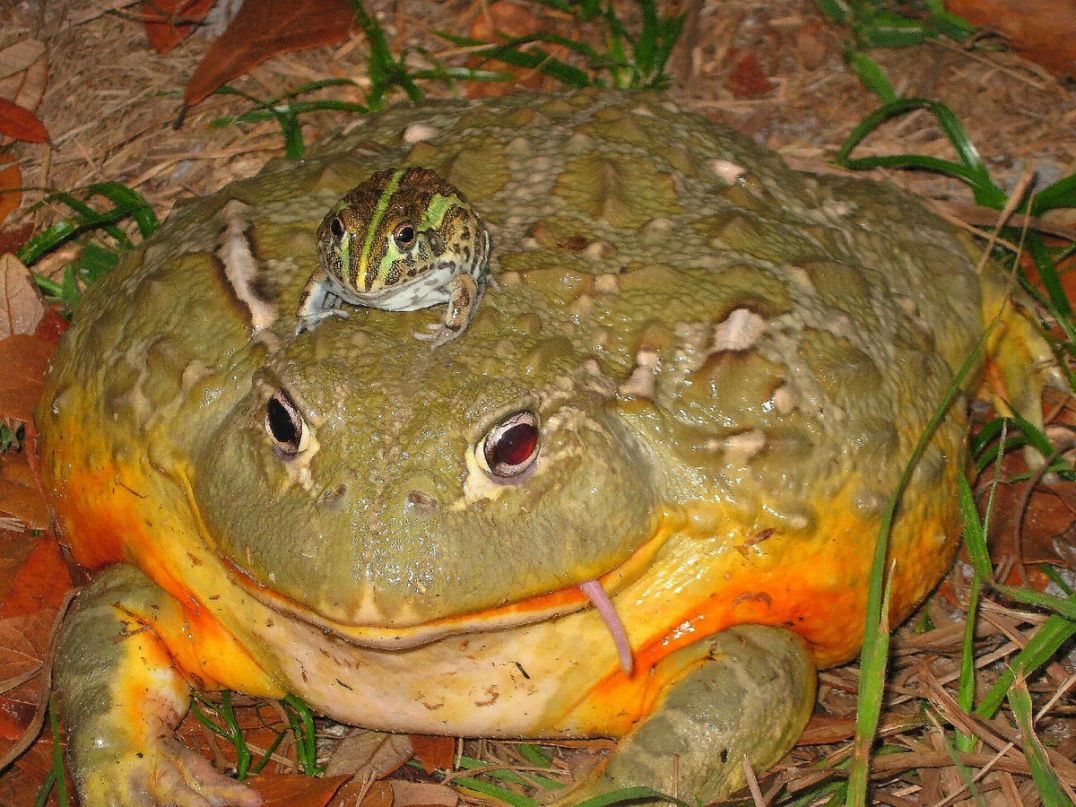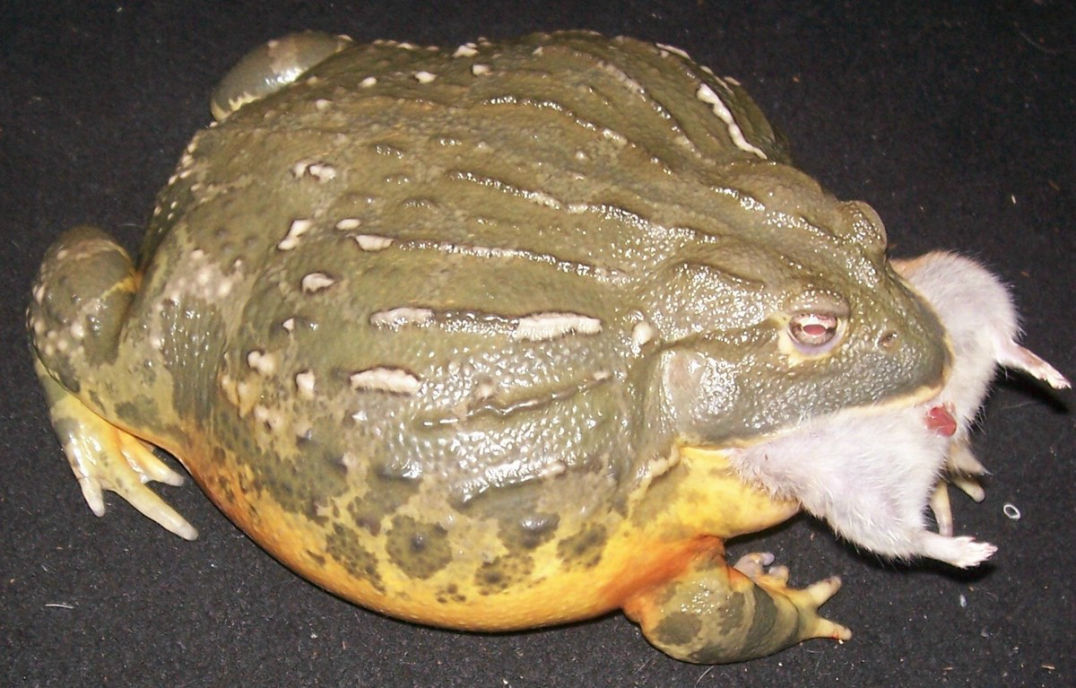
The largest frog
The images show that the goliath does not bear its name for nothing - this frog is truly impressive in size. Tribes that live near its habitat, affectionately call these frogs "sons". This is because an adult goliath reaches the size of a normal infant. Interestingly, but unlike their relatives, for whom the swamp is a natural habitat, goliaths "bypass" such reservations. They settle only where the water is crystal clear, and this is one of the reasons why so many people hunt for them.


